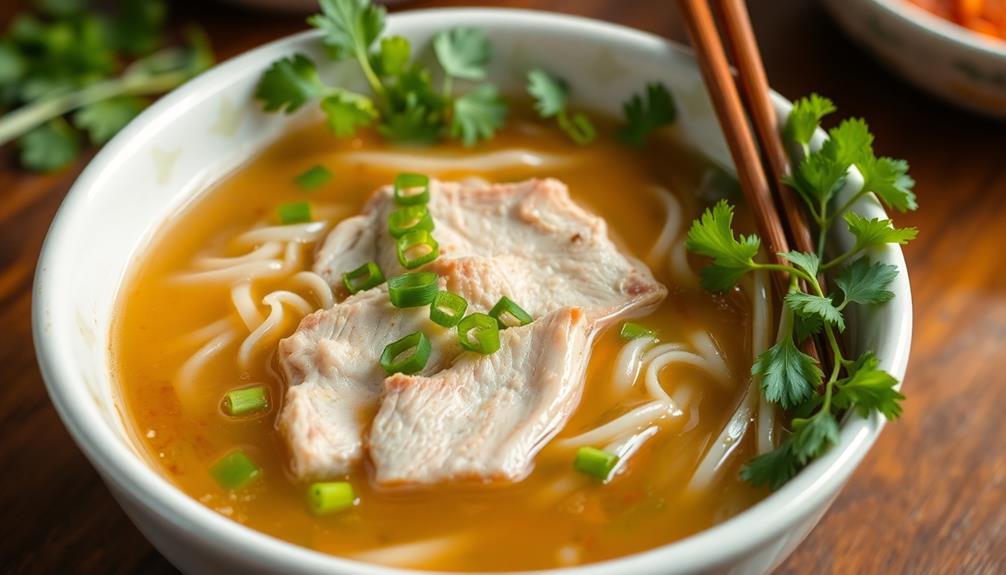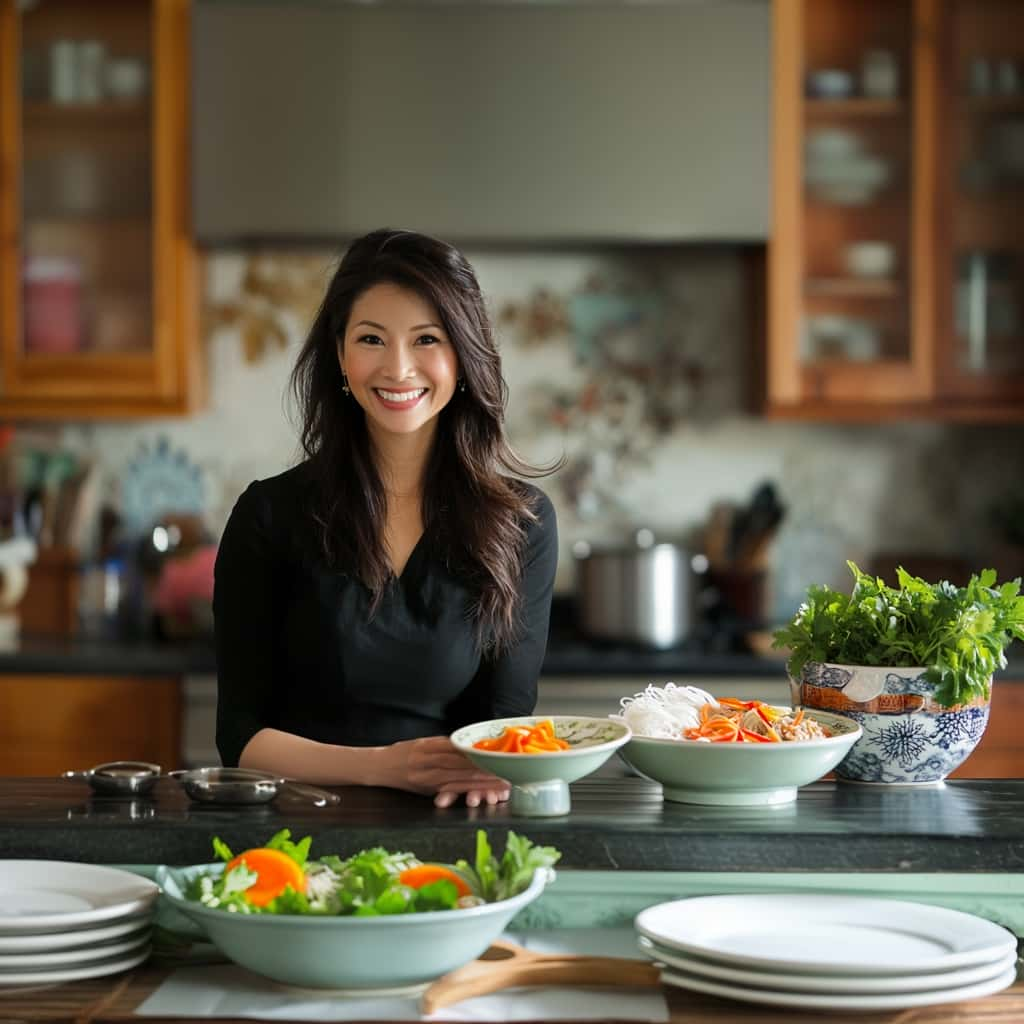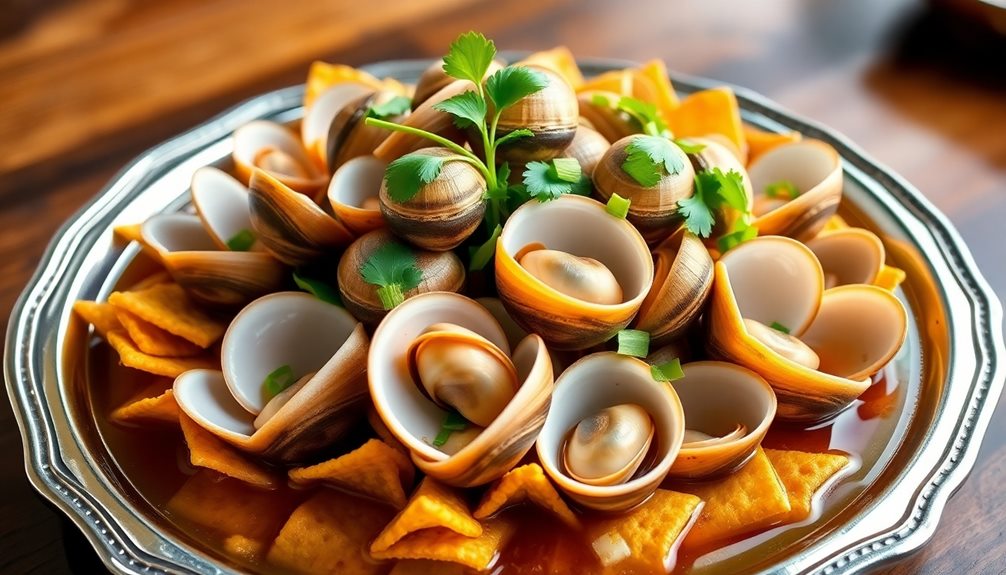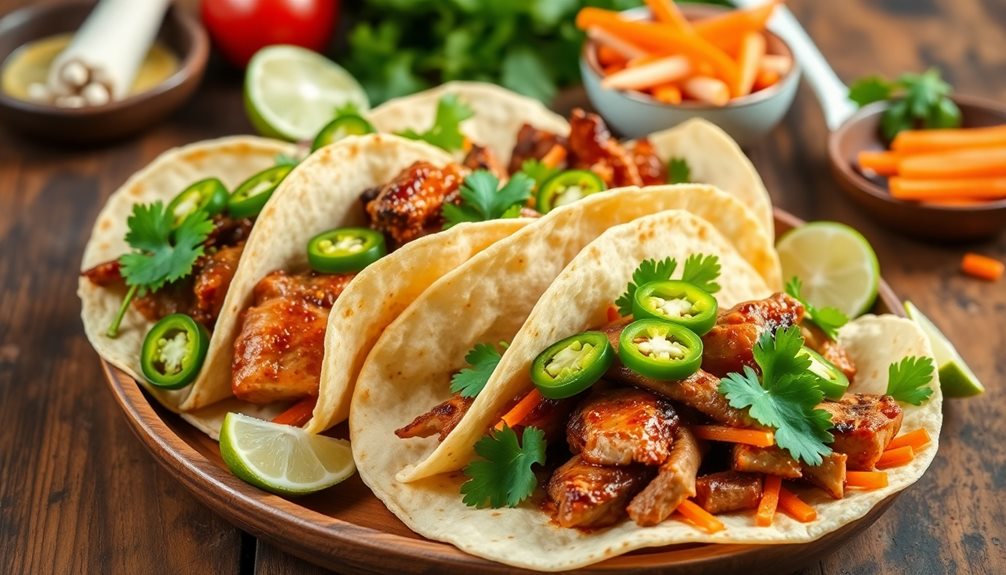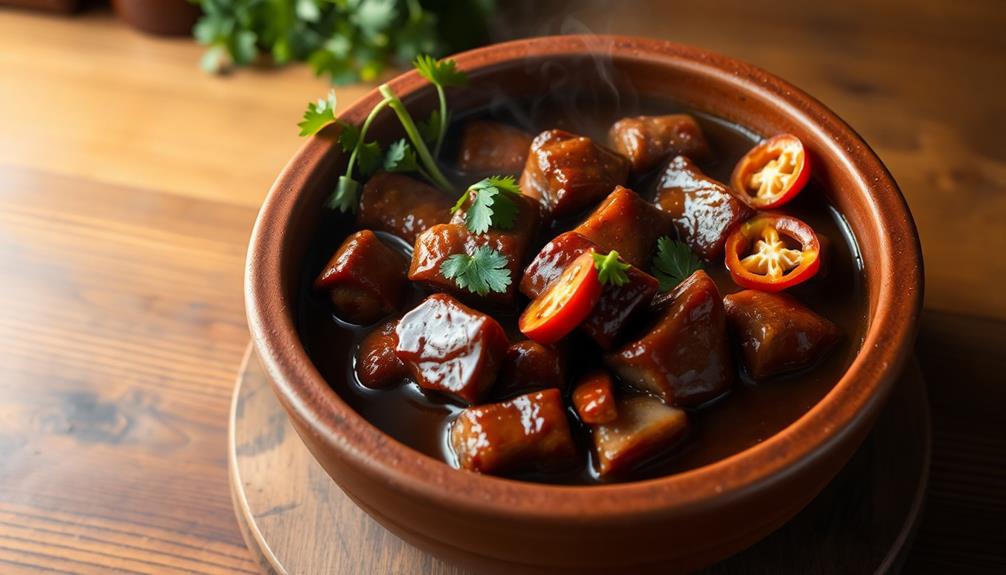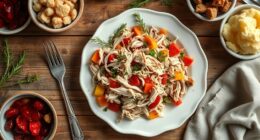Banh canh gio heo is a beloved Vietnamese pork and thick noodle soup that'll warm your soul. This hearty dish has roots in the countryside, featuring chewy tapioca noodles and tender pork hock that create a symphony of textures. The rich broth is simmered to perfection, utilizing every part of the pig. Over time, it's evolved with variations like shrimp and quail eggs, but the classic combo of succulent pork and gelatinous noodles remains a delight. Serve it up with vibrant garnishes like scallions and lime juice for an authentic, homestyle experience. It's the perfect dish to share with family and friends – and there's more to discover. For those looking to recreate this cozy meal at home, a Vietnamese pork hock recipe is surprisingly straightforward and rewarding. With just a few key ingredients and a bit of time, you’ll be savoring the deep, savory flavors that make banh canh gio heo so cherished. Whether it’s for a casual family dinner or a special occasion, this traditional dish offers a delicious glimpse into Vietnam’s culinary heritage.
Key Takeaways
- Banh Canh Gio Heo is a traditional Vietnamese dish featuring chewy tapioca noodles and tender pork hock in a rich, flavorful broth.
- The dish originated as a way to utilize every part of the pig, creating a hearty and satisfying meal.
- Over time, the dish has evolved with the addition of ingredients like shrimp, quail eggs, and crab.
- The cooking process involves soaking the noodles, boiling and simmering the pork, and adding fish sauce and scallions for flavor.
- Banh Canh Gio Heo remains a beloved staple in Vietnamese households and restaurants, offering a symphony of textures and tastes.
History
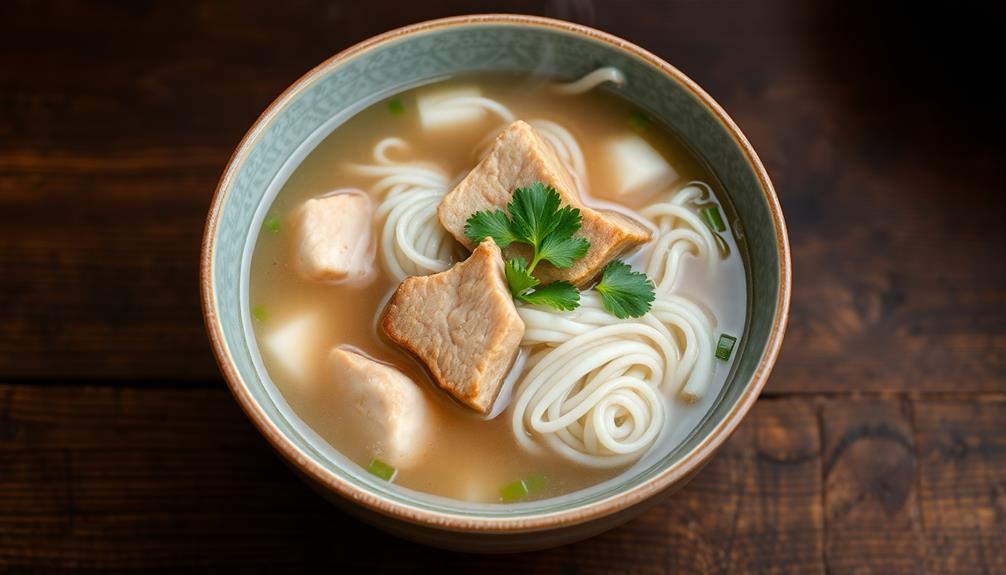
Originally, banh canh gio heo soup was a traditional dish enjoyed by the Vietnamese people. This hearty, comforting soup has its roots in the countryside, where families would gather to share a meal together.
The name "banh canh" refers to the thick, chewy noodles that are the star of the dish, while "gio heo" means pork hock or knuckle.
Historically, the soup was a way for Vietnamese cooks to make the most of every part of the pig, utilizing the flavorful hock or knuckle to create a rich, savory broth. Over time, the recipe has evolved, with variations that include shrimp, quail eggs, or even crab.
However, the essence of the dish remains the same – a comforting blend of tender pork, springy noodles, and a fragrant, aromatic broth.
Today, banh canh gio heo continues to be a beloved staple in Vietnamese households and restaurants, a testament to its enduring place in the country's culinary heritage.
Recipe
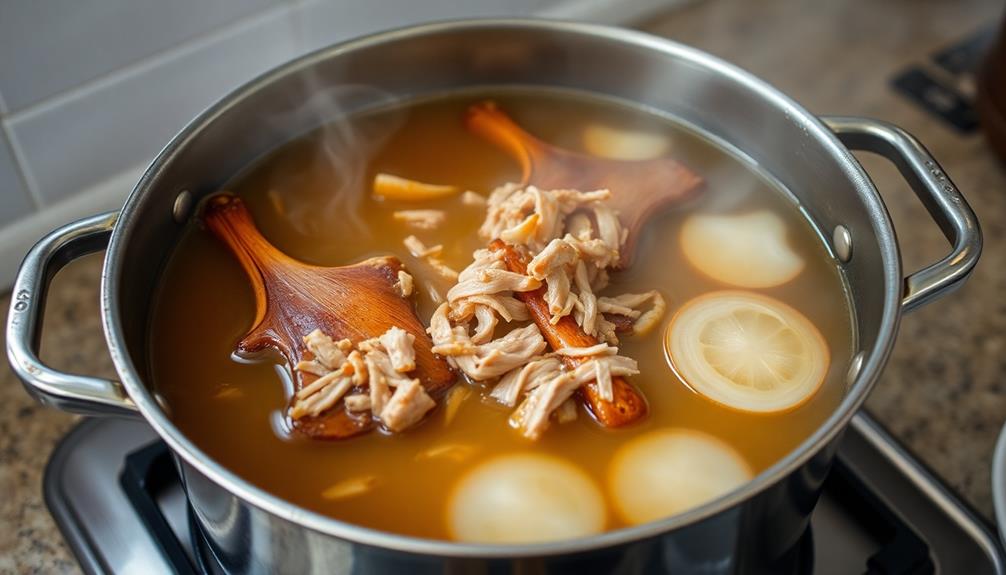
Banh Canh Gio Heo Soup is a comforting Vietnamese noodle soup that features chewy tapioca noodles and tender pork hock. This dish is a beloved classic, often enjoyed as a hearty lunch or dinner. The broth is simmered to perfection, resulting in a flavorful and satisfying soup.
The combination of the soft, gelatinous noodles and the succulent pork creates a delightful textural contrast. With a few simple ingredients and a bit of time, you can recreate this authentic Vietnamese dish in your own kitchen.
- Pork hock or ham hocks
- Tapioca noodles (banh canh)
- Onion, sliced
- Garlic, minced
- Fish sauce
- Salt and pepper
- Scallions, chopped
- Cilantro, chopped
To prepare the soup, first, place the pork hock in a large pot and cover with water. Bring to a boil, then reduce heat and simmer for 1-2 hours, or until the meat is tender and falling off the bone.
Remove the pork hock from the broth and shred the meat, discarding the bone. Return the shredded pork to the broth, along with the sliced onion and minced garlic.
Simmer for an additional 30 minutes to allow the flavors to meld. Taste and adjust seasoning with fish sauce, salt, and pepper as needed.
Cooking Steps
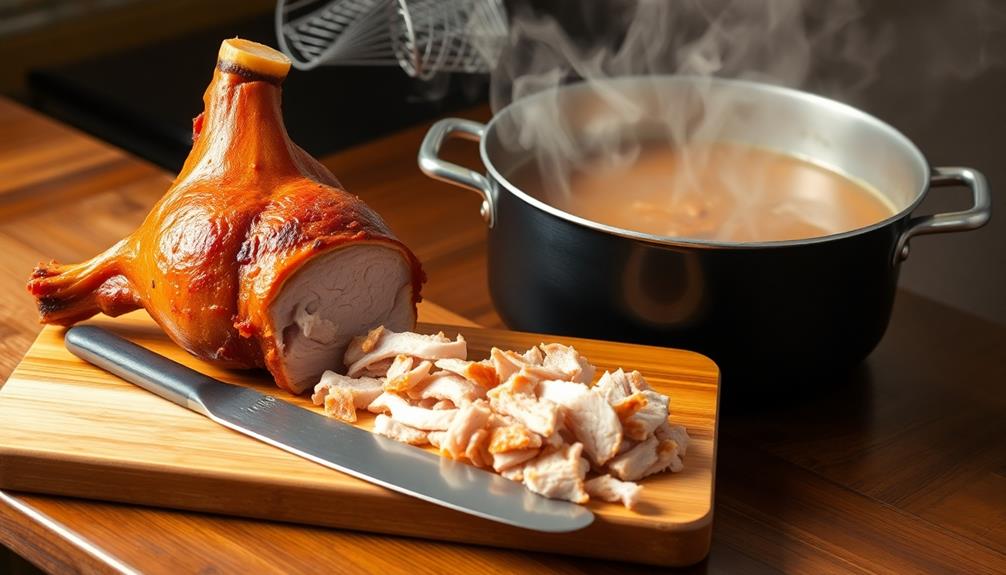
First, soak the noodles in warm water to soften them up.
Next, slice the pork belly into bite-size pieces so they cook evenly.
Bring the pork to a boil, then add a splash of fish sauce and some chopped scallions for extra flavor.
Step 1. Soak Noodles in Warm Water
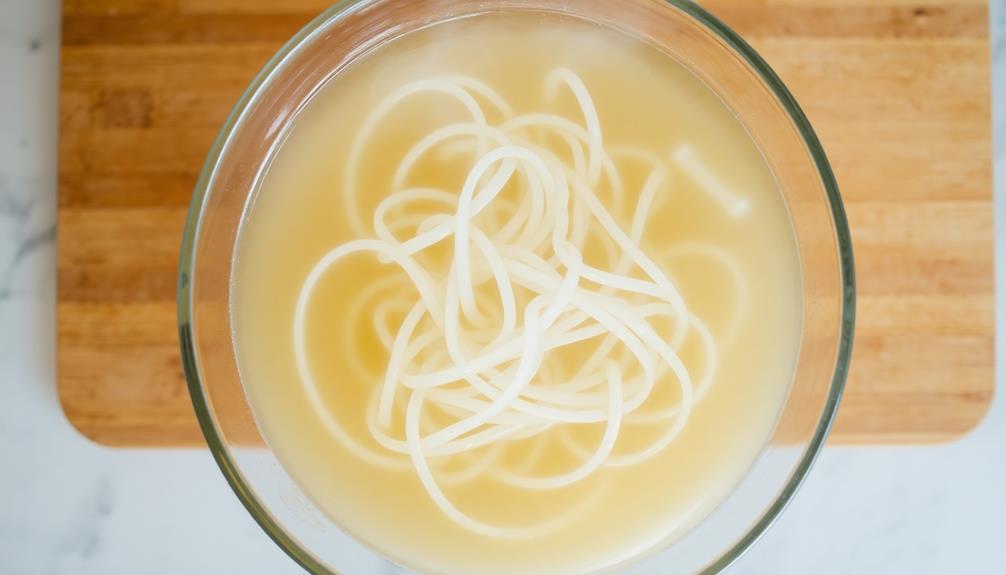
Next, you'll need to soak the banh canh noodles in warm water. This will help them become soft and pliable, making them easy to work with.
Simply fill a large bowl with warm water and gently submerge the dried noodles. Let them soak for about 15-20 minutes, or until they're nice and tender.
While the noodles are soaking, you can take this time to prepare the other ingredients for your delicious Banh Canh Gio Heo soup.
Keep an eye on the noodles, giving them a gentle stir every so often to ensure they're soaking evenly. Once they're ready, drain the noodles and set them aside, ready to be added to the simmering broth.
Get excited, because the best part is yet to come – assembling and enjoying this mouthwatering Vietnamese classic!
Step 2. Slice Pork Belly Into Bite-Size Pieces
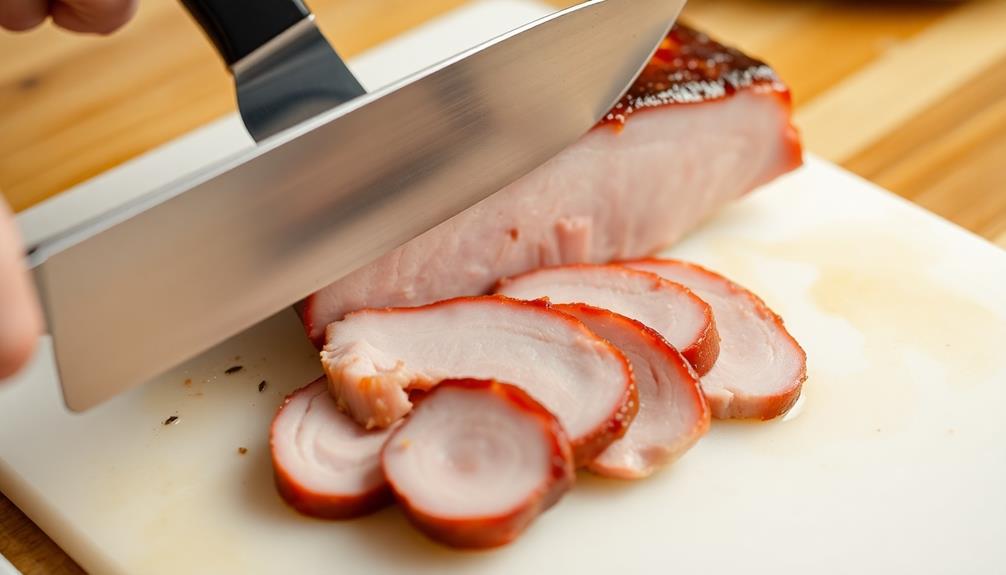
After draining the noodles, grab the pork belly and start slicing it into bite-size pieces.
You'll want to cut the pork into small, manageable chunks that will cook evenly in the soup. Use a sharp knife and work carefully, making sure each piece is about 1-inch in size. This will help the pork cook through and absorb all the delicious flavors of the broth.
Next, give the pork a good rinse under cool water to remove any excess fat or impurities.
Pat the pork pieces dry with a paper towel, then set them aside. The pork is now ready to be added to the simmering broth, where it will slowly cook and become tender.
Get excited – the savory pork is about to infuse the soup with its amazing flavor! Remember to stir the pot occasionally, so the pork cooks evenly.
Before you know it, you'll have a hearty, comforting bowl of Banh Canh Gio Heo soup ready to enjoy.
Step 3. Bring Pork to a Boil
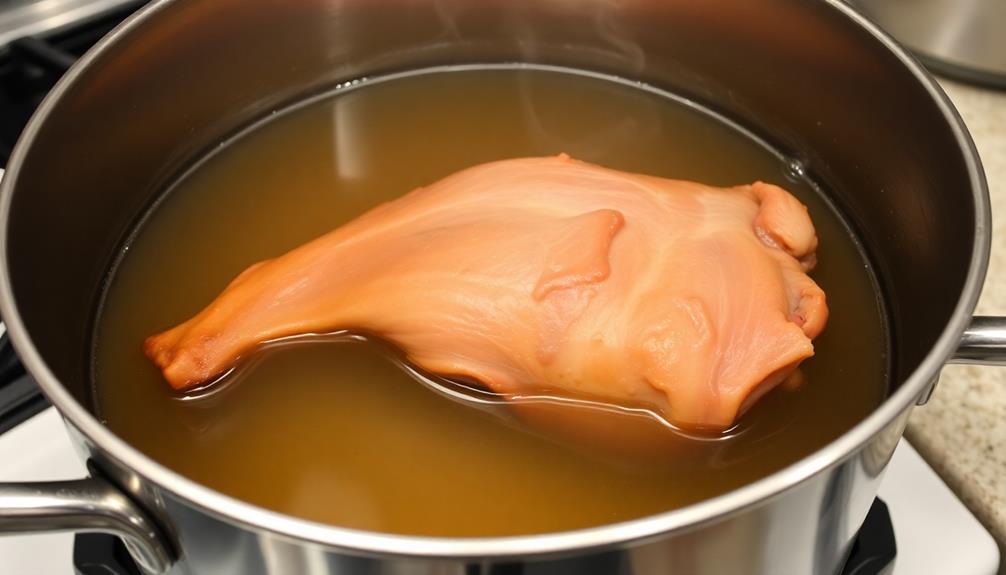
Once the pork belly is prepared, it's time to bring the soup to a boil. Place the sliced pork into a large pot and cover it with water. Turn the heat to high and let the pot come to a rolling boil.
As the water heats up, you'll see the pork start to change color. The meat will turn from a pinkish hue to a lovely, golden brown. Keep a close eye on the pot to make sure it doesn't boil over.
Once the water is at a full boil, reduce the heat to medium-low. Let the pork simmer for about 20 minutes, until it's cooked through and tender. This step helps to infuse the broth with the savory flavors of the pork.
Now that the pork is ready, it's time to move on to the next step – adding the noodles! Get ready to enjoy the delicious combination of chewy noodles, tender pork, and flavorful broth.
Step 4. Add Fish Sauce
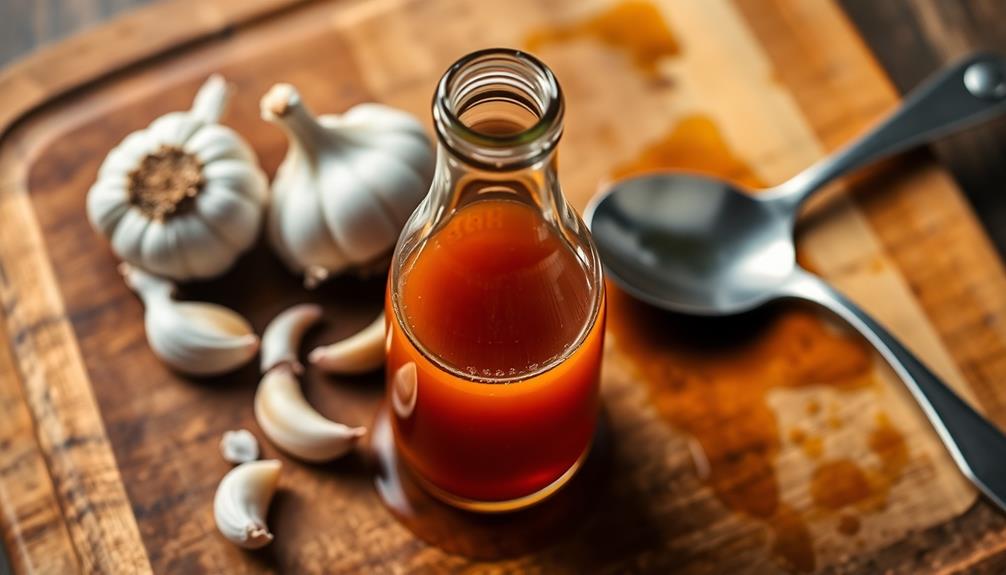
With the pork simmered to perfection, it's time to amp up the flavors. Grab that bottle of fish sauce and get ready to work some magic! Just a few tablespoons of this savory elixir will transform your broth into a symphony of Vietnamese goodness.
Carefully pour the fish sauce into the pot, stirring it in with gusto. Watch as the liquid takes on a deeper, more complex aroma. The salty, umami notes will mingle with the tender pork, creating a flavor that's out of this world.
Don't be shy – add a bit more if you want an extra punch of flavor. Just remember, a little fish sauce goes a long way, so start with a small amount and taste as you go.
Soon, your kitchen will be filled with the irresistible scents of this authentic Vietnamese soup.
Step 5. Add Chopped Scallions
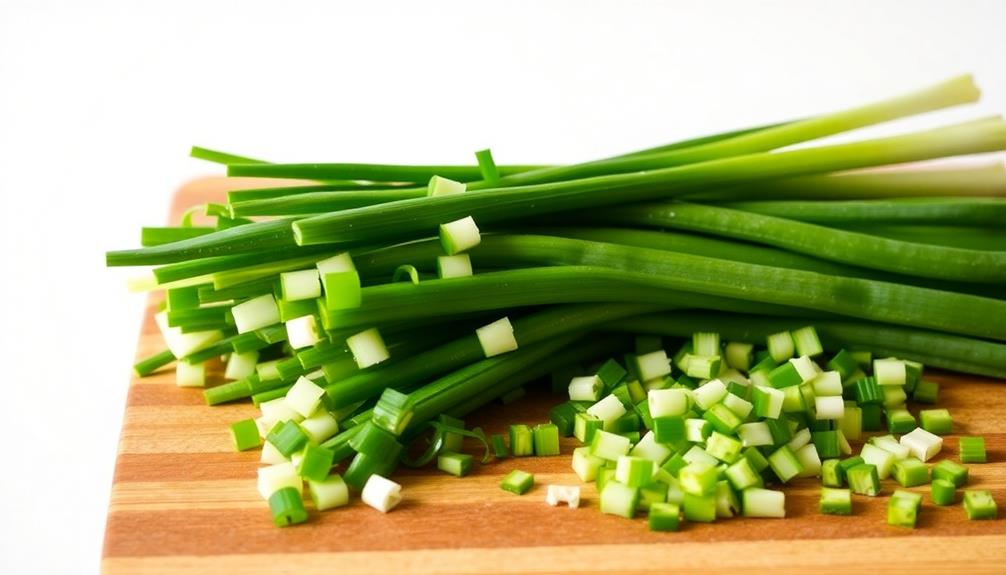
The fragrant broth now brimming with the savory essence of fish sauce, it's time to add the final touch – chopped scallions.
These vibrant green onions will elevate the dish, imparting a fresh, aromatic finish that brightens the entire bowl.
Grab a sharp knife and give the scallions a quick chop, slicing them into bite-sized pieces.
Sprinkle the chopped scallions over the top of the steaming hot soup, letting them sizzle and release their delightful aroma.
The contrast of the tender pork, chewy noodles, and the crunchy scallions will create a symphony of textures in every spoonful.
Don't be shy – load up your bowl with generous amounts of the fragrant scallions.
They'll add a pop of color and a tantalizing flavor that'll have your taste buds dancing.
With this final flourish, your Banh Canh Gio Heo soup is ready to be savored and enjoyed, a true Vietnamese delight.
Final Thoughts
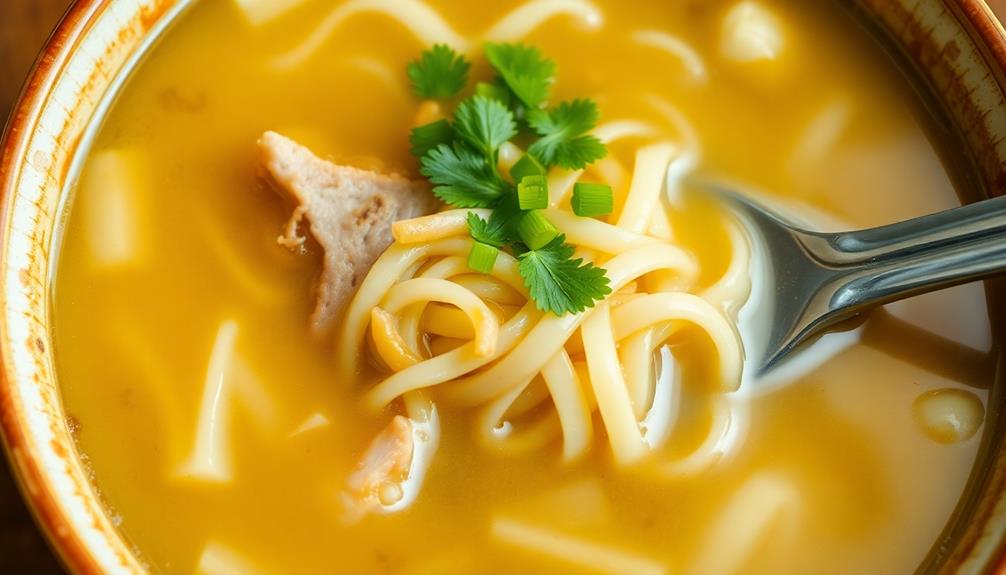
Banh Canh Gio Heo Soup is a delightful Vietnamese noodle soup that warms the soul. The combination of tender pork, chewy thick noodles, and a savory broth is truly a culinary delight.
What really sets this soup apart are the vibrant garnishes. The addition of fresh scallions, crunchy fried shallots, and a squirt of tangy lime juice takes the flavors to new heights.
It's a symphony of textures and tastes that'll have you coming back for more. Whether you're enjoying it on a chilly day or as a comforting meal, Banh Canh Gio Heo Soup is sure to put a smile on your face.
It's the perfect dish to share with family and friends, allowing you to bond over the love of good food. So, grab a spoon and dive in – this soup is guaranteed to become a new favorite!
Frequently Asked Questions
What Is the Origin of Banh Canh Gio Heo?
You'll find the origins of banh canh gio heo in the rich culinary traditions of Vietnam. This hearty soup has its roots in the country's diverse regional cuisines, reflecting the flavors and techniques of Vietnamese home cooking.
How Do I Find the Right Ingredients for This Dish?
To find the right ingredients for this dish, start by visiting your local Asian grocery store. Look for thick, chewy noodles and pork cuts that are suitable for simmering. Don't be afraid to ask the staff for recommendations.
Can I Substitute Any Ingredients in the Recipe?
You can substitute some ingredients in the recipe, but be cautious. Certain substitutions may alter the dish's authentic flavors and textures. Experiment with similar ingredients, but stay true to the recipe's core components for the best results.
How Long Does It Take to Prepare Banh Canh Gio Heo?
Preparing this dish takes around an hour and a half. You'll need to simmer the broth, cook the noodles, and assemble the various components. With a bit of planning, you can have this hearty soup on the table in no time.
What Are the Common Variations of This Vietnamese Soup?
There are several common variations of this Vietnamese soup. You could add shrimp, quail eggs, or pork blood cubes. You might also find versions with different types of noodles like round or flat rice noodles.
